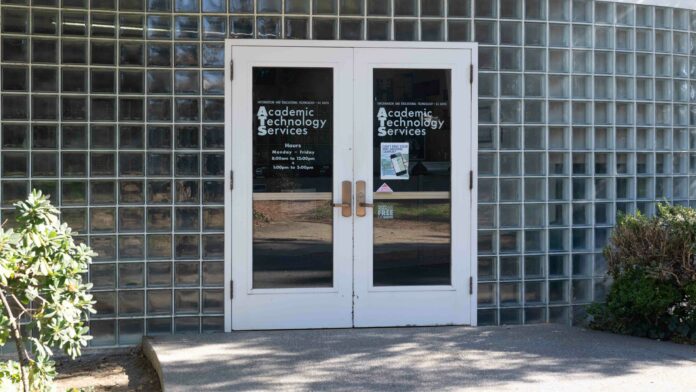Turnitin should not be the sole determiner of plagiarism, says Turnitin representative
Popular anti-plagiarism software Turnitin is currently in the process of being added to UC Davis’ Canvas. While funding for the expense has been approved by the Provost, the anti-plagiarism product is under information security review and the timeline for implementation is unknown.
The Turnitin database includes 70 billion current and archived internet pages, one billion student papers, over 47,000 journals and 69 million articles and documents from various publishers. Turnitin uses an algorithm to compare strings of text from students’ papers to its vast database. The result of this process is a “similarity report,” which highlights the text in a student’s paper to show potential areas of similarity or plagiarism.
Donald Dudley, the director of the Office of Student Support and Judicial Affairs, said that requests for a tool like Turnitin originated primarily from faculty. Students concerned after seeing their peers engage in academic misconduct played a role as well.
Despite this, some students struggle with the implementation of Turnitin. The company has received repeated lawsuits from students due to Turnitin’s practice of storing student papers in their database.
Issues have also arisen when professors take similarity reports at face value when they should instead be used as a starting point for a conversation between a professor and a student about potential plagiarism. A representative from Turnitin explained that a similarity score on its own “is not an indicator of plagiarism, but rather an indicator that a conversation needs to be had and maybe a piece of work needs to be evaluated and a professor and student need to talk about proper citation methods.”
Plagiarism is not cut and dry but rather a spectrum — Turnitin’s website includes an article describing ten different types of plagiarism.
Trish Serviss, the associate director of the entry-level writing program, echoes this sentiment, explaining that as students learn, attribution errors may occur.
“Most students, especially when they’re beginning [a new type of writing] try to paraphrase and put their own terms, but they’re still learning what the terms are and what they mean,” Serviss said.
Serviss said this is a common occurrence, especially among non-native English speakers and first-generation college students and should be seen as an opportunity for growth.
Many current actions taken by the university to reduce plagiarism address problems such as these. Dudley outlined the ways plagiarism and misattribution could be stopped before they happen. These include faculty speaking at orientation regarding academic expectations, presenting workshops specifically about writing and citations, explaining writing assistance and tutoring availability and having students acknowledge the academic code of conduct at the beginning of each quarter.
Other types of plagiarism, however, are more sinister. Students now have the option to purchase papers online at the click of a button, obtaining them from “paper mills” or copying work word for word.
“To me, it’s a whole different category,” Serviss said.
Having additional tools toward combating plagiarism is a “good thing,” according to Matt Traxler, the associate vice provost for academic planning.
“Having a good independent means for assessing whether something has been plagiarized or not, that’s a good thing,” Traxler said.
Serviss expressed concerns over faculty potentially using the results from Turnitin as the only way they have a conversation with students about their writing.
“It runs the risk of becoming the solution,” Serviss said. “It might become mistakenly the only way that they interact with students about writing and that’s my worst nightmare.”
Beshara Kehdi, a Ph.D. student in cultural studies, wrote that implementing Turnitin will not solve the plagiarism problem at UC Davis.
“TurnItIn.com is not a quick fix panacea to preventing plagiarism or to developing competent writers,” Kehdi said via email. “If there exists distrust between faculty and students regarding what they are producing and submitting, and it is widely felt, then that is an institutional problem and the campus community, instructors and students, should be tasked with addressing it [as opposed to an outside company].”
Since the university is just beginning the process of implementing this service, many questions remain unanswered. Although the tool is an opt-in for professors, it remains unclear whether students will be able to opt-out.
“If I’m a student and I have to take a certain gateway course for my major, and all of those [class] sections require that I [either opt in to Turnitin or opt] out of the major?” Serviss asked. “I’m worried about the nuance. How are we going to apply it? How are we going to create safeguards [so] that we use it ethically?”
Written by: Jessica Baggott — campus@theaggie.org




